#Purva Ashadha Nakshatra
Explore tagged Tumblr posts
Text
05 MARCH 25.
𓂀 ASTRO NOTES: EXOTICISM IN ASTROLOGY .
AN: i was inspired by this post by @hoodreader, which talks about the "wild woman" trope and hones in on the exotification of women of colour. read their post first as mine just builds off it.

EXOTICISM — A romanticization, fetishization, and/or commodification of ethnic, racial, or cultural otherness, as in orientalism, or primitivizing representations of the ‘noble savage’. Ethnocentric stereotyping (as in Eurocentric views of non-European cultures), in which the other is marked by difference (see markedness). In post-colonial theory, this is identified as a form of objectification, marginalization, domination, oppression, and exploitation. SOURCE.

highlighting the examples used in the post, chel's voice actor has purva phalguni sun and can have purva phalguni moon. beyoncé has purva phalguni sun. not a major placement, but pocahontas' voice actor has purva phalguni venus making it domicile. [she does, however, have a shravana moon, which was explored by claire as fitting into this "wild woman" trope]. esmeralda's voice actor is demi moore who has bharani moon.
this means all the examples used in hoodreader's post either have a venus nakshatra as a main placement or revati as a main placement, which is venus' exaltation nakshatra.
SIDE NOTE: i'm not including merida, since she's not "exotic" and is a different type of "wild woman" trope in my opinion. i'm also excluding isabella madrigal as her character deals with a different trope i will be exploring soon in my upcoming pushya post.
venus relates to elitism - leading to them being seen as special and "exotic", as well as venus obviously relating to attraction. this plays into the fetishisation within exoticism. venus also relates to discrimination, seen more in purva ashadha but the theme is venusian and spreads across all venusian nakshatras (including revati).

short post but this was a great idea and i wanted to add my own two cents! posts coming soon xoxo 💋
. * . ⁺ .⁺ ˚ . * . ⁺ .⁺
© 2025 opalblade. do not copy, repost, or translate my works to any other platforms.
#vedic astrology#astro notes#astro observations#astroblr#astrology#vedic astro notes#vedic astro observations#✧ / opalblade on venus .#✧ / opalblade originals .#✧ / opalblade miscellaneous .#purva phalguni#purva ashadha#bharani#purva phalguni nakshatra#purva ashadha nakshatra#bharani nakshatra#revati#revati nakshatra#nakshatra#nakshatras
132 notes
·
View notes
Text
Astrological analysis: similarities between Ian Somerhalder and Megan Fox


• Both have Mercury and Sun nakshatras:
Ian: Jyestha Sun | Uttara Ashadha ASC
Megan: Ashlesha Moon | Krittika Sun
• Both have Venus nakshatras
Ian: Purva Phalguni Saturn (lagnesha)
Megan: Purva Ashadha ASC
• Both have influence of Mars (rashi or nakshatra)
Ian: Scorpio Sun (atmakaraka)
Megan: Mrigashira Venus (atmakaraka) + Mars in the 1H in conjunction with ASC
• Both influenced by Saturn signs
Ian: Capricorn ASC
Megan: Aquarius Jupiter (lagnesha)
• Both influenced by Jupiter signs
Ian: Pisces Moon
Megan: Sagittarius ASC
#astrology observations#vedic astrology#ian somerhalder#megan fox#jyestha nakshatra#purva ashadha nakshatra#ashlesha nakshatra#mars in the 1th house#scorpio sun#mrigashira#atmakaraka#lagnesha#uttara ashadha nakshatra#krittika nakshatra#krittika sun#uttara ashadha asc#cancer moon#ashlesha moon#capricorn#pisces#sagittarius#aquarius#pisces moon#mars#rashi#nakshatras#sun nakshatra#mercury nakshatra#venus nakshatra#purva phalguni nakshatra
104 notes
·
View notes
Text
Purva Ashadha Nakshatra "The Star of Invincible Waters"

Purva Ashadha Nakshatra embodies the dual nature of flowing waters. This celestial symbol represents not only strength but also the relentless force of water, capable of carving landscapes and reshaping the environment. In many cultures, water is acknowledged for its transformative power; it can erode mountains and create valleys. Similarly, Purva Ashadha reflects this dynamic aspect, suggesting a capacity for remarkable change and a relentless pursuit of goals. Individuals influenced by this nakshatra often possess strong will and determination, empowering them to overcome obstacles in their journeys.
Conversely, the waters associated with Purva Ashadha also have a gentle and soothing quality. While they can evoke images of destruction, they equally signify comfort and relief, reminiscent of a cool breeze on a hot day. This duality encapsulates the essence of balance, teaching that strength does not have to be aggressive. The calming nature of these waters offers familiarity and reassurance, suggesting that true power often lies in restraint and harmony. Thus, those born under this nakshatra can access both assertive and nurturing traits, allowing for a multifaceted approach to life's challenges.
Furthermore, the influences of Purva Ashadha extend beyond individual traits, impacting interpersonal relationships and community dynamics. The strength of these waters can forge deep connections, promoting camaraderie and support among peers. In contrast, their calming essence encourages understanding and empathy, fostering an environment that promotes collaboration.
In this way, as mentioned above, Purva Ashadha individuals are not only empowered by their inner strength but also motivated to uplift those around them. The interplay of power and gentleness in Purva Ashadha Nakshatra serves as a reminder that both traits are essential for personal development and societal progress, urging the integration of assertiveness with compassion.
Return to Basic Stories of the 27 Nakshatras Masterpost
#astrology#vedic astrology#Purva Ashadha#Nakshatra#Sagittarius#Capricorn#Purva Ashadha Nakshatra#astrology observations#astrology blog#vedic notes#vedic astro notes#vedic astro observations#astro notes#vedic astrology observations#Capricorn Notes#Sagittarius Notes#Capricorn Sign#Sagittarius Sign#Capricorn Zodiac Sign#Aquarius Zodiac Sign#Astrology Notes#Astrology Descriptions#Nakshatra Descriptions#birth chart#natal chart#astrology posts#astro observations#astrology chart#astrology tumblr#Nakshatra Notes
29 notes
·
View notes
Text
Purva Ashadha - The Rejuvenating Waters

Degrees: 13°20 Sagittarius to 26°40 Sagittarius Deities: Apah, the mighty Goddess of water; Varuna, God of sea and rain. Vimshottari Lord: Venus Sounds: भू bhu, धा dha, फा pha, ढा dha The core meaning: just like crystal-clear water, you combine strength and flexibility. Your inner energy is so intense that you invigorate anything you are in contact with. You achieve your goals with brilliant strategies; you adapt yourself with elegance. You cover your high ideals with art and beauty: who can resist?... Hardly anybody. And what about your pure ideals? Are they bearable for everyone? You are so confident that you can forget other people's needs and views. Then, you unleash a boiling deluge on them, leading to karmic disasters. Humanity is not perfect and still has to learn: be patient and nurturing to people and you will be rewarded greatly. Qualities: honest, direct, composed, strategic, charismatic, flexible, supportive, courageous, determined. Affliction: blunt, judgmental, impatient, aggressive, dogmatic, argumentative, elitist. Interest in water, politics, art, martial arts, history, wars.
#astrology#vedic astrology#jyotish#nakshatras#sidereal astrology#astro#degree#degrees#astro notes#astro community#purva ashadha#purva ashadha nakshatra#sagittarius#purva ashadha ascendant#purva ashadha rising#purva ashadha moon#purva ashadha sun#purva ashadha ak#purva ashadha atmakaraka#purva ashadha first lord
89 notes
·
View notes
Text
Purva Ashadha and Shravana (monkey yonis)
As a famous movie couple.
Purva Ashadha is the last venus ruled nakshatra, meaning "the previous invincible one", its symbol is a winnowing basket, separating all things worthy from the unworthy. Its ruling deities are Apas, water creatures, and this nakshatra is strongly connected to waters and the seas. It's about gaining alliances to secure your victory.
Shravana is the last moon ruled nakshatra, meaning "hearing", its symbols are the ear and three footprints. Ruling deity is Vishnu- Hindu preserver god and consort of Lakshmi(associated with Purva Ashadha and Rohini). Its about connecting everything together.
Now, let me introduce you to the couple.

Aragon and Arwen
from The Lord of the Rings trilogy.
Liv Tyler (Purva Ashadha moon)
Viggo Mortensen (Shravana moon)
When the first movie begins Aragorn is a simple, lonely ranger, but always dedicated to doing what he thinks is right. He definitely has the makings of a king, he's also descended from Isildur, being the true heir to the throne. Despite his lineage, he's living like an average lowly man, an outcaste, wondering on on his own. Shravana is connected to wandering and also being one of men and that being the trait that makes the king. Shravana is "the savior" or "the preserver" of mankind, and that also obviously applies to Aragorn. Shravana being mleccha (outcast) caste also ties with him living like a lowlife and being apart from society.
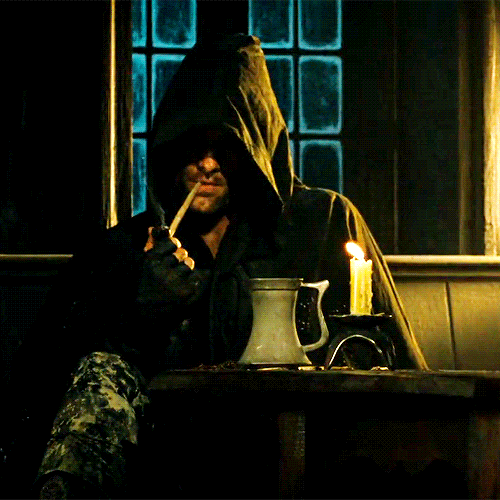
Arwen, on the other hand, is busy rebelling against her father and choosing a mortal life due to her love for Aragorn. She's a noble elf maiden (Purva Ashadha is in the Brahmin caste- the highest standing caste). Purva Ashadha (like all venus nakshatras) are romantics and always choose to bravely follow their heart. Also a very interesting thing to note is that Arwen is reffered to as "the evenstar" or "the evening star", which is obviously Venus.
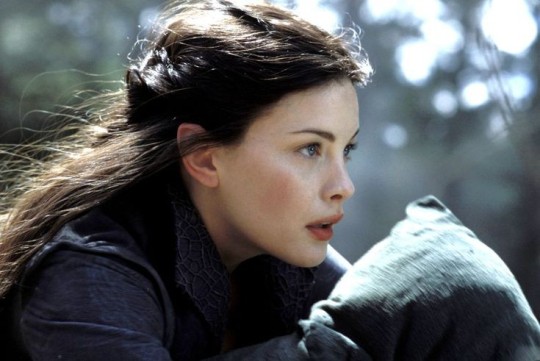
When she gifts Aragorn her necklace, he refuses at first, not believing himself worthy, but Arwen insists and says: "It is mine to give to whom I choose, like my heart". That pretty much sums up what this nakshatra is about.
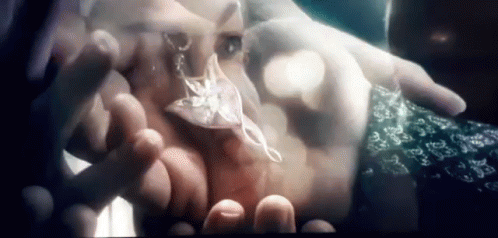

Eventually, Aragorn does become king and Arwen does choose a mortal life, even thought it meant seeing her love age and die before her.
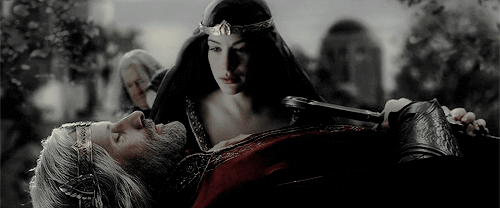
One of my favorite scenes in the whole trilogy is when Arwen is taking Frodo to Rivendell while they're being chased by the Nazgul. She bravely stands up to them and summons the waters to defeat them. Purva Ashadha's power is to invigorate and Arwen using the waters to secure her victory makes a lot of sense.
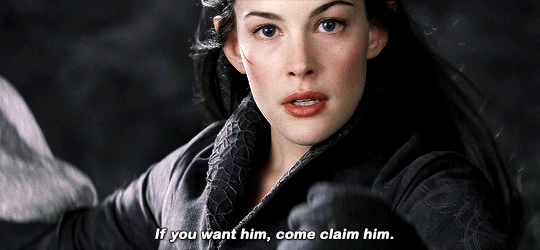
Purva Ashadha invigorates, Shravana connects and together they become a formidable team.

Everytime I think of Purva Ashadha and Shravana my mind immideately goes to these two. The setting, the etheral aesthetic and the otherworldliness makes me think of their yoni- Vaanar also meaning "human-like creature" or "a human-like being from other dimentions" in Sanskrit. They were said to live in forests and that's where Arwen went and lived before she passed, overcome by the grief of being separated from her love. But their story remains in the minds and hearts of people, and their love, courage, devotion and loyalty is remembered forever.
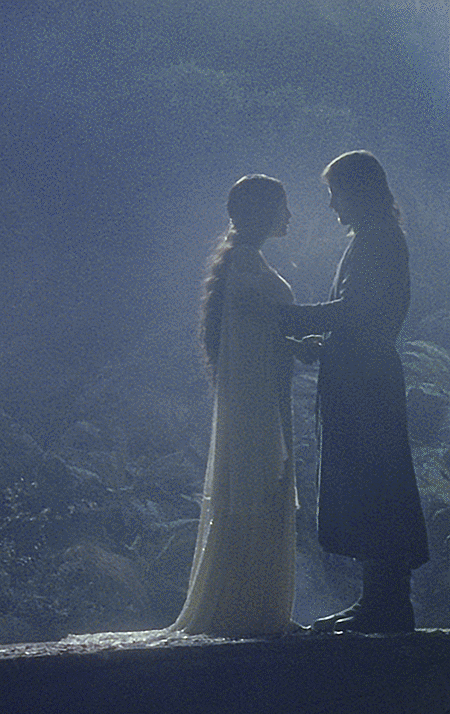
If you're Purva Ashadha or Shravana, or if you love lotr/arwen and aragorn, let me know what you think. Please, interact with me in any way. Love you, take care 🤍
#vedic astrology#astrology#nakshatras#astrology observations#purva ashadha#purva ashadha nakshatra#shravana nakshatra#shravana#astro notes#sidereal astrology#astrology tumblr#lord of the rings#the lord of the rings#lotr trilogy#arwen undomiel#arwen#aragorn#arwen evenstar#aragorn x arwen#Spotify
279 notes
·
View notes
Text
Full Moon Forecast — July 10, 2025 at 2:36 PM MST
Full Moon in Sagittarius | Guru Purnima | Purva Ashadha Nakshatra The full moon of July 10, 2025, rises with the energy of Guru Purnima, a sacred time to honor our teachers, guides, mentors, and those who have illuminated our path. Guru means “dispeller of darkness”—and this moon invites us to reflect on all who have helped us find the light during times of uncertainty. It’s a time to bow to the…
#Full Moon#Guru Purnima#Michelle Berry#Michelle Berry Bliss#Purva Ashadha Nakshatra#Sagittarius#Sidereal Astrology#Vedic Astrology
0 notes
Text
Nakshatra Observations - part 1



If I say moon in swati then that observation is ONLY for MOON in swati, and not ascendant, mercury, Saturn, etc.
Moon in Dhanishtha are the ultimate givers. These people are selfless and rarely give a shit about their own needs. They learned to be responsible from a young age, and will have elder sibling energy even if the youngest in the house. They can have "controversial" opinions; ahead of their time. Will break generational cycles. Trouble in marriage is almost always seen. 2 or more marriages. Extremely stubborn, and this quality will make them end up in hot water.
Sun in Anuradha people can constantly change their place of residence. They may feel uncomfortable staying in the same place for too long. They'll have great leadership ability and can be successful entrepreneurs. Will be the most responsible one in their family. Will have this urge to become fully spiritual after 45. I've seen that these people, after a certain age, are quite literally unable to live a "modern" life.
Saturn in Ardra can be either positive or negative, depending on the ascendant. The common interpretation is that they can be very good at controlling their emotions. Will have two careers or constantly change careers. If Saturn is positive for an ascendant then both the careers will bring wealth and happiness and if Saturn is a functional malefic for an ascendant, then nothing will bring satisfaction.
Ascendant in Bharani people can be very materialistic, and a little obsessed with beautiful things and people 👀. They often feel this need to express their sexuality but it's accompanied with a feeling of guilt; it's like, they WANT to but they think they shouldn't. They're a mix of sensuality and abstinence. I actually don't know how to word it properly, but these people could start feeling shy during sex or masturbation, it's like, it starts normally and then in the middle, these feelings creep in.
Sun in punarvasu people are one of the most intelligent people that I've ever come across. Their ability to write about complex topics is truly very admirable. They can be great writers and publishers, especially in regards to politics and religion. The negative side is that they have a tendency to overwhelm themselves with too much work because they don't know when to stop.

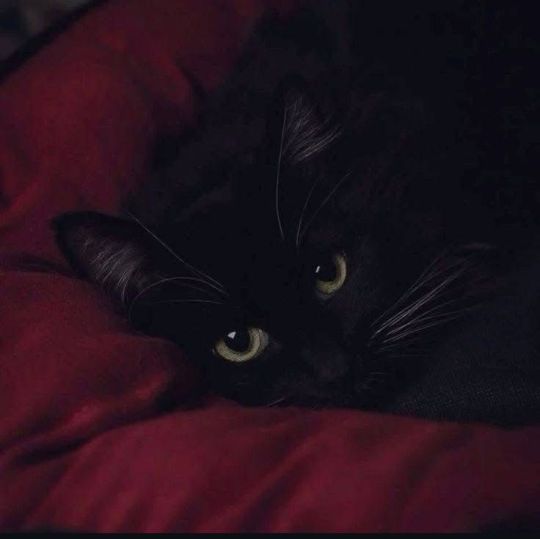

Jupiter in Purva Phalguni people are another group that I think are very intelligent. They can be very passionate about certain social issues and you'll often see them posting about them. For ex, there are some people who don't post much about social issues because they're afraid of their opinions being seen as "controversial" but that's not the case with this placement. They have the confidence to express their opinions and stand by them.
Moon in Uttara Ashadha people and their obsession with reading and writing sad poems (sharing sad memes as well). These people also have a complicated relationship with their father, it's like, "he's a great father but a terrible husband" kinda thingy and that's why for them, completely loving their father is a little hard. These people are very kind and helpful and can have many friends as a result of that. These people can also be asexual, or it could be that sex is just not THAT important to them.
Ascendant in Uttara Bhadrapada....I feel like people really overhype this, because everyone that I've met who has this, looks like they're done with life. They're highly spiritual beings and find it difficult to engage in small talk. They have trouble understanding social cues and might not really fit in with society. They have many karmic responsibilities and life will often feel like a series of obstacles. Progression happens slowly. Enemies will have the power to destroy their reputation. Travelling will bring them the peace they desire.
Venus in Mrigashira is extremely lucky for women. Their married life is mostly smooth sailing with some large waves in between, but nothing that they can't handle. They'll have to travel a lot and may settle away from their birthplace. They can get the top position in their career very early on. The possibility of having twins is quite high. These people are usually great at networking and this quality usually takes them far in life.
Jupiter in Mula people are great at giving advice but suck at following them. This is another placement that makes a person very spiritual, but unlike Uttara Bhadrapada, they avoid their material responsibilities and focus more on the spiritual ones. People with this can be terrible parents and spouses. Their need to completely submerge themselves in spirituality is awakened after 40. It's considered to be a good placement in Vedic because of the immense focus on "spirituality" but I don't consider it as such, it brings negative consequences because the current society doesn't support things like this.

Divider by @bernardsbendystraws
© martian-astro10 All rights reserved, 2025
#astroblr#astrology#astrology community#astrology observations#astrology content#astro notes#vedic astrology#vedic observations#vedic astro notes#vedic astro observations#dhanishta#anuradha#ardra nakshatra#bharani nakshatra#punarvasu#purva phalguni#uttara ashadha#uttara bhadrapada#mrigashira#mula nakshatra
491 notes
·
View notes
Text
Your Beauty Based On Your Nakshatras 🍒
*DISCLAIMER- This is my first observations post about the nakshatras so please bear with me! i know there is some discourse about these types of posts in the astrology community but oh well lol i just wanted to do something fun for my first time. i will make more in depth posts once i deepen my knowledge on it.

Note: This is how I see the Nakshatras other people will see differently and that’s ok!
🥀 Venus Nakshatras (Purva Phalguni, Bharani, Purva Ashadha)
-They seem to have an air of mystery in my opinion. They have the girl next door kind of beauty, think of movies where the guy sees a girl at the airport or on a train and he doesn’t see her ever again but he keeps fantasizing about her. Venusians are the type to captivate someone within one glance. They are also sensual but in a subtle way, they don’t have to do too much to show that side of them because it’s not only based on how they look but the way they talk, walk, and their personality.
Ex. Jasmine Tookes (Purva Phalguni Moon), Adele (Bharani Sun), Alina Baraz (Purva Ashadha Moon)


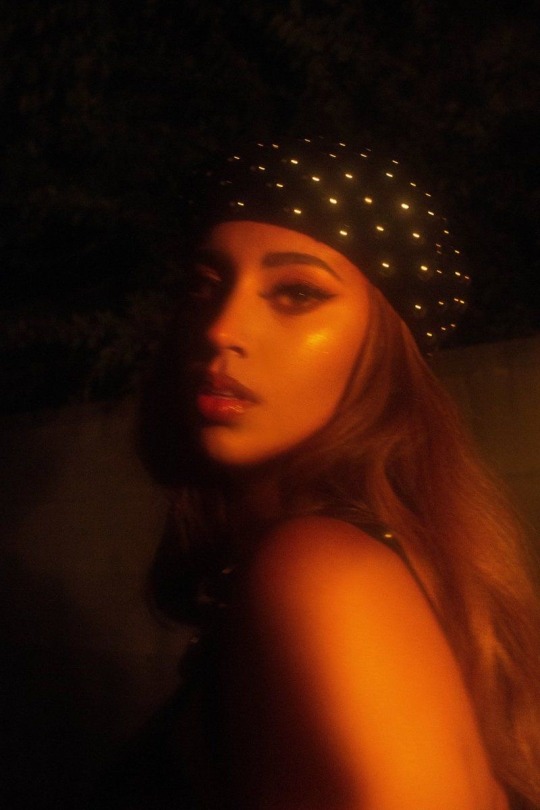
❤️🔥 Mars Nakshatras (Dhanishta, Chitra, Mrigashira)
-These people are just���SEXY! But honestly what can you expect when it comes to mars. In my opinion it seems like they can’t hide their sexiness it doesn’t matter what they wear or if they wear a lot of makeup or not they will always ooze sex appeal. They are the type to turn heads no matter what room they walk in because that’s how good they look, not only that they seem to have this confidence about them whether you see yourself that way or not others may definitely do! They are always topic of conversation.
Ex. Ana De Armas (Chitra Moon), Megan thee stallion (Dhanishta Sun), Jennifer Lawrence (Mrigashira Moon)



🌙 Moon Nakshatras (Rohini, Hasta, Shravana)
- These women have the popular girl in movies type of beauty, they are usually peoples girl crush. I notice that their physical appearance is often talked about. They appear younger than what they actually are not just physically but their demeanor, personality, and spirit. They may get stared at a lot. I will also like to add that pictures does not do these nakshatras justice at all, they are so beautiful in person similar to the moon!
Ex. Ariana Grande (Hasta Moon), Normani (Rohini Sun), Nina Dobrev (Shravana Moon)



✨Mercury Nakshatras (Ashlesha, Jyeshtha, Revati)
-They are so sultry in a dark feminine type of way. They also have RBF and can appear very intimidating. Many people might assume that mercurials are mean due to the way they look (imo they are pretty nice). They are the kind of girls that you want to talk to but they come off unapproachable so you just admire them from a far lol. I also notice they love playing with makeup looks especially their eye makeup!
Ex. Ryan Destiny (Revati Moon), Alexa Demie (Jyeshtha Sun), Megan Fox (Ashlesha Moon)
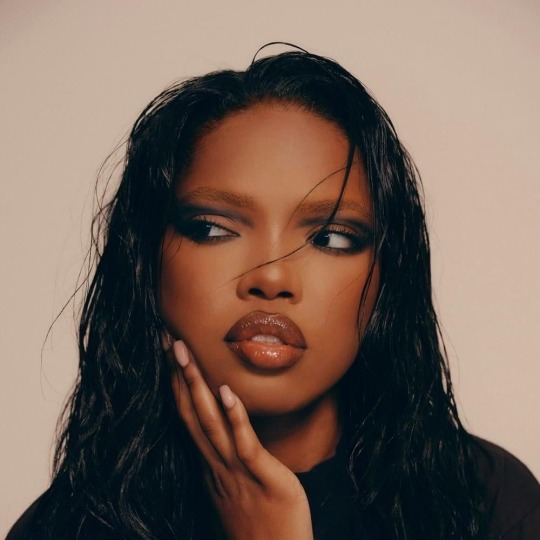


🫀Ketu Nakshatras (Magha, Ashwini, Mula)
-Ketu Nakshatras have the dark feminine vibe but more in a melancholic kind of way. Their femininity is more darker than mercurials and often dress in black or darker colors in general. they also have a very unbothered look to them. I notice that these ketuvians can be complex and very misunderstood, you think that you have them figured out but there is WAY more to them than beyond surface level. They have a haunting type of beauty! The kind of women you never forget.
Ex. Kat Dennings (Magha Moon), India Eisley (Ashwini Moon), Amy Winehouse (Mula Moon)
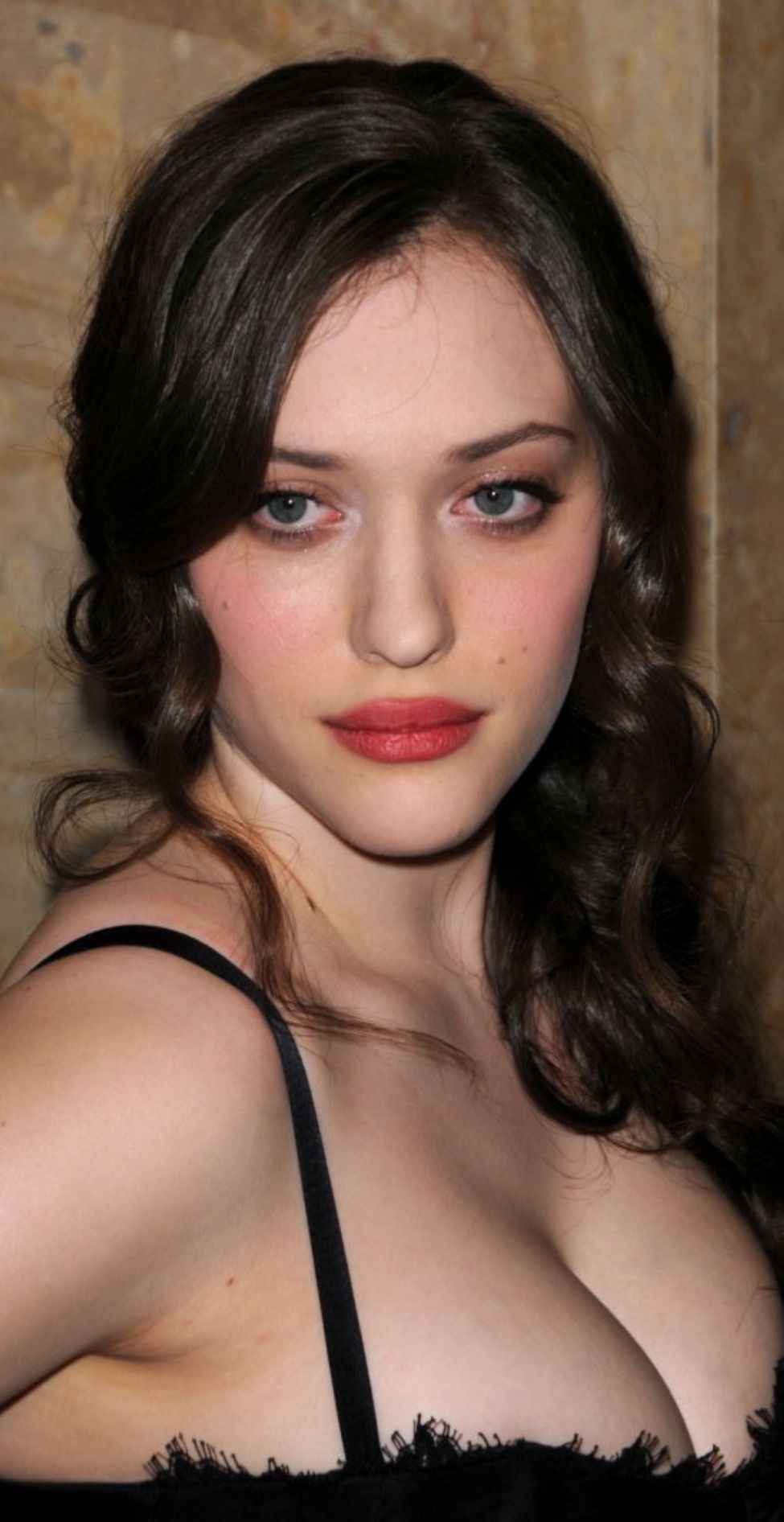


🌞 Sun Nakshatras (Uttara Ashada, Krittika, Uttara Phalguni)
-These hotties are bombshells. They have the ability to light up any room. They also have such a radiant aura as well. They are the "hard to get" hot girl that everyone pines over! They are usually center of attention no matter where they go. I notice that they are charismatic as well and that’s what honestly reels people in the most! In my opinion, they remind me so much of a trophy wife. Their partners love being able to tell people that you guys are married/dating.
Ex. Madelyn Cline (Uttara Phalguni ASC & Moon), Eliza Dushku (Krittika ASC), Naomi Campbell (Uttara Ashada ASC)



⚡️Rahu Nakshatras (Ardra, Swati, Shatabhisha)
-Have you heard of the quote from Scarface “The eyes, Chico. They never lie.”? Well that’s basically these nakshatras. Their eyes can tell stories and they can communicate to others very well with them. Often times they can look pretty sad even when they aren’t. Rahuvians look so dreamy, I can’t explain it, they look so soft but intense at the same time! Honestly, they are the type of girls people write about. Absolutely captivating!
Ex. Brittany Murphy (Swati Moon), Kaya Scodelario (Ardra Moon), Audrey Hepburn (Shatabhisha Moon)

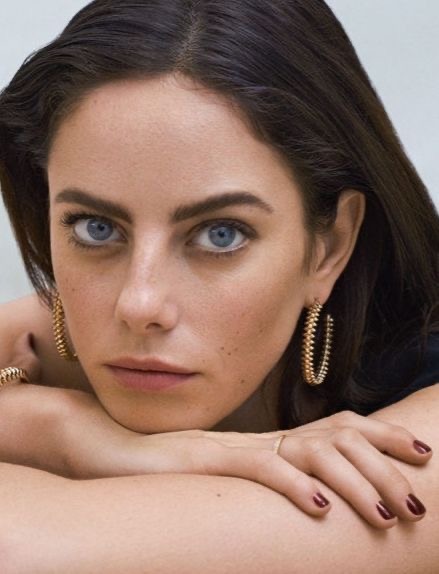

🛸 Saturn Nakshatras (Pushya, Anuradha, Uttara Bhadrapada)
-Otherworldly beauty! If you go outside you won’t see many people that look like them, their beauty cannot be replicated ever and trust me they will try to! These nakshatras were blessed with alluring and unique features. Saturnians look like they came right out of a fantasy film with different beautiful creations that are not of this world. They will also kill it in modeling especially editorial/high fashion they have the type of beauty that the modeling industry goes for.
Ex. Yara Shahidi (Anuradha ASC), Angelina Jolie (Pushya ASC), Halle Bailey (Uttara Bhadrapada Sun)


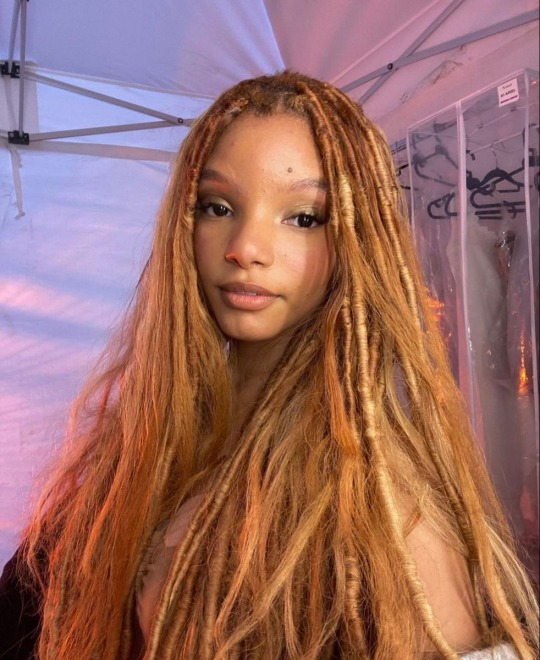
💋 Jupiter Nakshatras (Punarvasu, Vishakha, Purva Bhadrapada)
-These Nakshatras are MANEATERS! no but seriously they are so seductive! They can give office siren as well. I truly believe they can make anyone get down on their knees for them. Their aura to me is pretty powerful they know exactly how to act to get people (men especially) at their beck and call. I also notice that people lust after them quite often, they could easily use that for their personal gain if they wanted to.
Ex. Penelope Cruz (Punarvasu Moon), Lily Rose Depp (Vishakha ASC), Madison Beer (Purva Bhadrapada Sun)



Yours Truly,
divinefemmexx 🖤
#vedic astrology#astro notes#astro observations#nakshatra#sidereal astrology#astrology#vedic astro observations#vedic astro notes#purva phalguni#purva ashadha#purva bhadrapada#uttara ashadha#uttara phalguni#uttara bhadrapada#hasta nakshatra#bharani#pushya#shatabhisha#anuradha#ardra nakshatra#krittika#magha#ashwini#mula nakshatra#ashlesha#nakshatras#vedic notes#vedic astrology observations#rohini#shravana
2K notes
·
View notes
Text
S*x Work/K*nks of Dominant Types
Moon Nakshatra: Cuddlers, Possibly Mommy/Daddy roleplayers
Mercury Nakshatra: Whips, chains, BDSM, leather
Venus Nakshatra: Choking, Hitting, Biting, blood sharing
Jupiter Nakshatra: Praise Kinksters, Dominants
Saturn Nakshatra: Submissives
Sun Nakshatra: Voyeurs
Mars Nakshatra: Just intercourse. Hours.
Rahu Nakshatra: Masturbate. When they're with other people, they'll need guidance because they act as if they're brain shuts down when they see a sexual organ.
Ketu Nakshatra: Pay em or barter. You want s*x with them, offer to fix their plumbing or something. Clean the house. Yadda yadda.
Each Nakshatra as well has their own preference, but this quicker to post 👍
Also, for people that may want to go into s*x work one day.
#Ashwini#krittika#bharani#purva phaguni#purva ashada#uttara ashadha#uttara bhadrapada#magha#ardra#rohini#hasta#shatabisha nakshatra#punavarsu#Vishaka#vedicknowledge#vedic thoughts#vedic astrology#astrology#astro observations#vedic observation#astro notes#sidereal astrology#nakshatra#vedic notes#mrigashira#chitra#dhanishta#swati#pushya#anuradha
512 notes
·
View notes
Text
Sun Dominant Themes — 𝐍𝐚𝐤𝐬𝐡𝐚𝐭𝐫𝐚 𝐎𝐛𝐬𝐞𝐫𝐯𝐚𝐭𝐢𝐨𝐧 𝐒𝐞𝐫𝐢𝐞𝐬 (part 1) 𝐨𝐟 𝐩𝐚𝐫𝐭 𝟔
Understanding why planets exalt in certain nakshatras, and houses, will give you an even better foundation for all nakshatra lords. For example, Venus loves being in Revati because this is where it can be unrestricted and as flourishing in its themes as it desires to be, since Revati is peak freedom and transcendence; Ketu loves being in Jyestha because this Scorpio nakshatra continuously releases so much heat which allows Ketu to function at its highest level; and Sun is its best version when it is in Ashwini, because this Aries nakshatra allows the Sun to be as hyper-independent and selfish as it desires to be, and Ashwini being co-ruled by Ketu helps one attract resources to further advance oneself — a theme I am seeing in all the Sun nakshatras.

The symbol of Krittika nakshatra is a sharp knife, and its deity is the fire god, Agni. This emphasizes the heat in Krittika which is connected to its transformative nature. This is seen in the refinement of blades, where the beginning stages involve forging – the process of heating and shaping of the metal – and then heat treating. Resources are used with precision in Krittika, anything unnecessary being cut away as resources are channelled with focus so that one rises to the top. The ruling deity of Uttara Phalguni nakshatra is Aryaman, the guardian of social contracts and hospitality. Aryaman is a solar deity, giving more emphasis to the life-giving heat and brightness of this Sun nakshatra. With Uttara Phalguni, resources are built and sustained through agreements, partnerships and community. Creating mutual connections and valuing generosity will lead to later pleasures, as this nakshatra is symbolized by the back legs of a cot and the word Uttara in Sanskrit can mean "latter," "subsequent," or "final." Uttara Ashada is ruled by the Vishwadevas, the universal gods, this indicating the superior, hyper-independence and highly resourceful nature of this nakshatra. This enables mastery in resource mobilization and strategic planning.

Uttara Ashada Sun Orlando Bloom portrays the character Will Turner in Pirates of the Carribean, who starts out as an accomplished blacksmith by trade – his fantastic swordsmanship a product of his work with tangible resources like metal and tools, demonstrating his ability to make effective use of his environment.
The agency of the self and one's independence is due to the aftermath of the Ugra nakshatras having purged away impurities, propelling Sun nakshatras to focus on one's inner solar light to align with their material plane. This is interestingly explored in films through the so-called "American Dream".
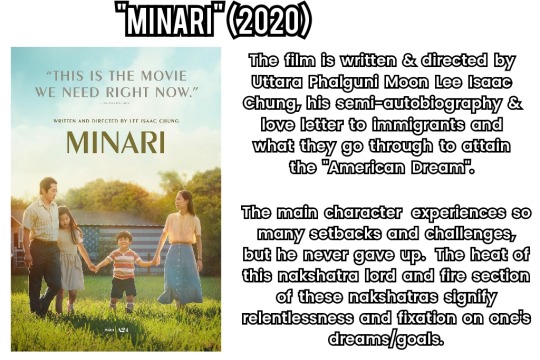
The "American Dream" refers to the belief that anyone, regardless of their socio-economic status and background, can achieve their dreams and make a better life for themselves in a society where upward mobility is accessible to all. The core ideals of this belief are explored in the film The Pursuit of Happyness, starring Uttara Phalguni Sun Will Smith who plays a struggling salesman rising from poverty to attaining professional success as a stockbroker — his character being driven by persistent effort, ambition, and belief in upward mobility.


The theme of the human spirit's resilience in the pursuit of personal dreams is also seen in the film Forrest Gump, starring Uttara Phalguni ASC Tom Hanks who plays a low IQ man who goes through many challenges and still never gave up on his dreams.
Sun nakshatras are more commonly associated with strong themes of ambition, leadership and success.

Aja Naomi King has Uttara Ashada Sun and Uttara Phalguni Moon, making her a dominant fire rashi native. She portrays the character Michaela Pratt in How To Get Away With Murder. She is a young woman who is an ambitious overachiever, possessing an intense fire in her and is relentless in chasing after her goals with focused determination.

The character Paris Geller from Gilmore Girls, portrayed by Uttara Ashada Moon native Liza Weil, is known for her relentless ambition, being an aggressive perfectionist, and possessing a fear of failure which mirrors Michaela Pratt’s personality, often the cause of her clashing with others.

Sun natives are able to sacrifice and delay gratification for their goals. The elephant tusk of Uttara Ashada represents enduring strength, the nakshatra also being in the first section of the Capricorn rashi (Saturn supporting themes of endurance and delays). Uttara Phalguni's symbol is a bed or hammock, which represents the rest after hard work and generosity, completing the journey from Purva Phalguni in this final stage. And Krittika being the blade, or razor, signifies it as a cutting force able to slice through obstacles, fuelled by a desire to execute excellence.

Daniel Plainview in There Will Be Blood exemplifies the darker, more ruthless and capitalistic side of this "American Dream" — operating more Ketuvian as he is portrayed by Ashwini Moon native Daniel Day Lewis, drawing parallels with Ashwini Moon Christian Bale in American Psycho (further emphasizing why the Sun exalts in Ashwini, as Ashwini possesses this pure, ungovernable and all-consuming masculine energy which can become self-building).

The book Oil! follows the son of an independent oilman who initially idolizes his father's rise to power which has a rags-to-riches quality to it. The book highlights the nefarious strategies that oilmen employ through the main character's sympathy towards the underdog people (oilfield workers), a solar theme which will support further points I'll be touching on. But this corruption of the self from accumulating so much intoxicating power is definitely the darker side of Sun nakshatras.
The character Plainview uses oil as a lucrative resource and leverages it to build his empire, also coming from humble beginnings. He embodies this 'self-made', hyper-independent archetype in which hard work highlights one's determination and ability to turn opportunities into wealth. But the writer of the film, and the author of the novel Oil!, shine light on the emptiness and loneliness of this accumulation.

In the story, The Great Gatsby, the character Jay Gatsby initially comes from a poor background, and he meets a high-status woman who he falls in love with. She becomes one of the reasons for his drive, shaping his desire to escape poverty and become successful.

Uttara Phalguni's ability to outwardly evolve to positions of power and have access to things which are symbolic of pleasure and luxury emphasizes the inward radiance and resilience they possess to overcome challenges.
There is a Solar archetype which possesses a type of independence and a resourcefulness that doesn't translate into dominance, but rather into strictly following one's own path of righteousness — remaining strong willed no matter the people one is surrounded by. And there is a level of generosity and duty to this archetype, as Surya, the Hindu Sun god, embodies Dharma (which is related to duty, righteousness and upholding truth).

Will Turner fully embodies this archetype. Even when he's surrounded by pirates, and learns of his familial background of piracy, he stubbornly sticks to what he believes is right. His character has consistently been a strong moral compass in the franchise, upholding righteousness and truth — pointing to the higher leadership and moral integrity important in Uttara Ashada, as this nakshatra is ruled by the Vishwadevas, who are believed to reward those who follow moral principles and righteous paths.
Being burdened with so much duty, Surya (the Sun god) has to endure distant relationships with his close familial bonds. Will Turner mirrors this exactly, his duty as the Captain of the Flying Dutchman (a powerful evolution of his character as he initially started as a humble blacksmith) binds him to a duty higher than his mortal life. Because of this, he could only see his son and wife every once a decade, much like how Surya cannot be close to his sons and spouses.

A lot of sacrifices that they endure include cutting away human attachments, although this archetype is moreso explored from the hyper-independent lens in Claire Nakti's Sun Dominant Men video, as they voluntarily become absent fathers/deadbeats from their inherent selfishness — very much opposing the ideals of many Sun gods, but a correct negative manifestation nonetheless.
All Sun gods support this solar archetype of justice, leadership and source of nourishment. Helio, in Greek mythology, personifies the Sun, bringing light to the world, also regarded as the god of sight. Surya is a source of vitality and justice. Ran, the Egyptian Sun god, serves as a great protector, encompassing intense sun rays which ward off evil.
Characters which embody this protective, superior force are often played by Ketu and Sun nakshatra natives (and as Ketu nakshatras are seen as dominant forces in nature, we see how Sun nakshatras adapt in isolation, and become dominant as well, using tools and resources to remain resilient). Claire Nakti already explored this with Mula's connection to Hercules, while I connect the nakshatra Uttara Ashada to characters such as Robin Hood & Tarzan. Just as the Sun gods symbolize a life-giving energy which keeps stability in the universe, George of the Jungle and Tarzan are characters who both protect the jungle and its inhabitants from poachers and other humans with bad intentions — their presence alone warding off evil. Both characters serve as guardians to ensure harmony in the jungle.

The elephant tusk (of Uttara Ashada) often signifies, in many cultures, the protection of wildlife, especially from those who want to exploit and dominate nature. It also symbolizes a tool for survival, and it is associated with higher stature and power. This theme of one being the source of life and resources is seen in Robin Hood, a character which has Uttara Ashada influence. Robin Hood is known for safeguarding the well-being of his community, ensuring that their nourishment and dignity is preserved as he distributes wealth from the rich to the poor.

The bridge between Purva Ashada and Uttara Ashada could be represented by the purpose of Sagittarius — the archer aiming straight for victory. Uttara Ashada can be the release of the arrow, the culmination of focus to execute the final victory, as its stars lie close and pointing to the Galactic Center (signifying the bullseye). Uttara Ashada carries the final stage of the archer's triumph, embodying this legacy after the swift release of the arrow.

Much like Tarzan and George, Robin Hood lives in nature. Sun makes one completely self-sufficient, free from societal and religious roots which holds one back from finding their true essence. And the forest or woods represent a place one can explore their true selves and burn away what's false. The dominance of the Sun is seen in these characters' ability to comfortably live in such a place full of hidden threats like wild animals, bandits, or poachers. While for Ketu this theme signifies their huntress and taming power over the wild, for Sun it signifies their radical freedom and adaptability. Living in the forest, Robin Hood represents the figure of the outsider.

In the 2011 film Red Riding Hood, the character Peter is a woodcutter who embodies the archetype of the lone wolf. He is portrayed by Krittika Moon & Uttara Ashada ASC native Shiloh Fernandez. He knows the forest very well, and is often associated with the pure, wild aspects of it. He is very much like George of the Jungle, in that his love interest is also played by a Magha native, which I found this Sun-Ketu association very interesting.

His free nature and rough exterior (representative of his authenticity, making him a misfit in society) is what misleads the viewers into thinking that he is the werewolf that's been killing the townsfolk, but the truly animalistic and consuming force of the story is the character played by Ashwini Moon Billy Burke.
This lone wolf archetype supports their ability in being resourceful within their surroundings, often seen in survival stories in which the Solar native is stranded and is literally isolated from civilization.

Blue Lagoon (1980) is a survival film about two children living on an island after a shipwreck. Krittika Moon Christopher Atkins plays Richard, who becomes deeply attuned to the rhythms of the island, learning how to make use of the natural resources for their survival.
In the film Mad Max: Fury Road, Uttara Phalguni Sun Tom Hardy embodies this lone wolf archetype through the character Max. The story has a hyper-patriarchal system which is built around the hoarding of resources and exploitation of others. Max is completely removed from this society, prioritizing his own survival and maintaining his autonomy above all else.

His detachment makes him representative of someone who can solely rely on their resourcefulness and sharp instincts. This film is great as it stars two Phalguni natives; the character Furiosa being portrayed by likely Purva Phalguni ASC native Charlize Theron. Her warriorship is based around seeking a better future for the feminine, which is marked by love and autonomy.
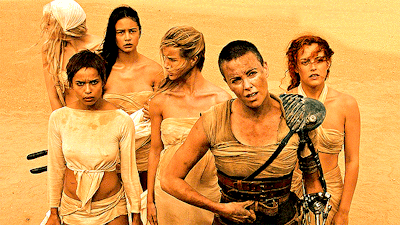
Furiosa, being Venus and an Ugra nakshatra, represents the fight for liberation and happiness, particularly on the freedom of Immortan Joe’s enslaved women, and her own freedom from such a restrictive society unfit for the feminine. The women's rejection of the patriarchy mirrors Max’s independence outside the system. Initially, he aligns with her merely out of necessity as she and the wives possess resources beneficial for his survival. But he treats them as equals, recognizing their autonomy and agency. Max's collaboration with them emphasizes Uttara Phalguni’s purpose of creating alliances and partnerships for higher purposes, supporting the journey that started from Purva Phalguni nakshatra.
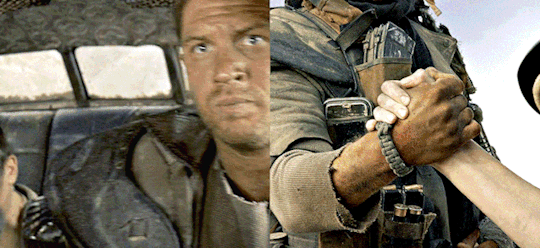
After aiding Furiosa, Max returns to his hyper-independent lifestyle; burning the attachments he formed with the women, and returning to his path that is away from the society.
This ability to survive by oneself, to reshape one's environment, mobilizing resources even in barren circumstances, is a theme for Sun nakshatras — further exaggerating this lone wolf, mysterious archetype (as seen with Max in Mad Max: Fury Road and Peter in Red Riding Hood).

The Sun is the natural giver of light and energy, but it does not receive light in return. Solar natives, often being so self-sufficient, give to others but rarely lean on them for much support. The character Elliot Alderson from Mr. Robot is a hacker, his final achievement towards the end of the series making him a modern day Robin Hood. His mission to expose corruption and empower the oppressed is akin to the Sun being a source of illumination, Krittika especially being known to cut away illusion. He is played by Krittika Sun Rami Malek.

Elliot remains emotionally isolated, as he has noticed that anyone who gets too close to him burns in the end — very similar to how the Sun god, Surya, burns and shines too brightly that his wife, Samjna, runs away from him. Elliot's solitary nature makes him feel extreme loneliness, but he maintains a distance from others, his hyper-independence stemming from his traumatic past and his mistrust of others.
There's a genre of film which explores the cause of such imbalanced independence, much like how Max's reason for burning attachments being due to trauma and previous lose. Christmas Carol movies often have Sun natives casted in them, portraying characters that possess a level of misanthropy and selfishness which drive them into further isolation.
The famous character, Ebenezer Scrooge, is a miserly, bitter, and cold-hearted old man who despises Christmas as it is associated with things of generosity and happiness. His name has literally become synonymous with selfishness, cynicism, greed and a lack of compassion. Ebenezer leads a solitary life, being estranged from family and detached from community due to his cold demeanour and focus on material gain. A Christmas Carol is a tale of Scrooge's redemption through three spirits, who highlight moments of lost joy, compassion, and the choices that led to his current misery and his future lonely funeral.

After his epiphanies, thanks to the spirits who took him on a journey of rediscovery, his redemption is seen when he wakes up on Christmas morning being transformed into a generous, joyful person — helping the community and reconnecting with his family. His renewed sense of compassion from being such a mean, wicked old man could be interpreted as the Sun burning away negativity to rekindle the warmth and generosity that the Scrooge has repossessed within himself. This tale is retold in the 2008 Barbie in a Christmas Carol, in which the character Eden Starling is a glamourous singer who is extremely self-centered and arrogant. She does not believe in Christmas and even refuses her employees from celebrating it.

She is voiced by Uttara Phalguni Sun and Uttara Ashada Moon native Morwenna Banks. Much like the timeless festive tale, three ghosts visit her on Christmas Eve, taking her on a journey through her Past, Present and Future. This leading her to have epiphanies regarding how much of her light had been dimmed and how lonely her future will be. These scrooge characters were once so brilliant and bright, but their inner light became eclipsed by bitterness, lose, or regret, leading to a life devoid of merriness — and being cold and frosty towards others.
Life’s challenges, such as betrayal, lose or disillusionment, leads these solar natives to retreat into isolation and despair. In the film Jingle Jangle, the character Jeronicus is a vibrant inventor, radiating so much brilliance and inspiring those around him.

Though not as cruel as Scrooge was, his arc still mirrors the Christmas Carol tale, in that his light becomes renewed. His young and redeemed older self both embody the festive spirit and joy of Christmas, acting as conduits for the magic, wonder, and generosity for the season.
The transformative journeys of these solar characters also extend to the Grinch, from the 2000 film How the Grinch Stole Christmas, the character portrayed by Uttara Ashada Sun native Jim Carrey. The tale was originally created by Uttara Phalguni Moon native Dr Seuss, first published in 1955.

The Grinch absolutely despises Christmas, much like Scrooge, being deeply consumed by resentment and envy while he isolates himself from the joyous Whoville community. His redemption is seen in him integrating himself into the community with newfound warmth, after experiencing an epiphany through a little girl’s unwavering joy and forgiveness. He returns the gifts he has stolen, realizing that Christmas is about love, not material possessions.
There are solar symbolisms in Christmas traditions, besides the gift-giving and festive feasting. These traditions can be traced back to ancient winter solstice celebrations, which made the symbolic rebirth of the sun, as the daylight hours began to increase after the winter solstice.
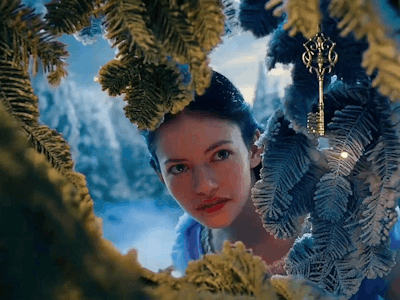
In 2018's The Nutcracker and the Four Realms, the character Clara, portrayed by Krittika ASC Mackenzie Foy, experiences a journey which can be symbolic of the winter solstice. The story begins with Clara in a dark emotional space following the death of her mother, this darkness being much like the world descending into the longest night at the winter solstice. But Clara seeks the key to her mother’s gift, which signifies as a source of life, fertility, and illumination that unlocks potential — the gift quite literally being a golden egg. Clara and her companion must retrieve the key and restore harmony to the unstable magical land. This theme of restoration, new hope, and redemption in a lot of these scrooge films, is symbolic to the Sun’s rebirth during the solstice — the return of life.
The practice of illuminating the Christmas tree with lights and ornaments mirrors the Sun's return, symbolizing a brighter future with the coming year. The infectious joy and generous acts during this festive season reflect the gratitude for the life-sustaining force that the Sun is, and the light for new hope it represents, as it promises abundance for the year ahead. The twin deities of Ashwini nakshatra are associated with rejuvenation, new beginnings, and vitality; this resonates with solar qualities, further explaining why Sun feels naturally at home in Ashwini. The Ashwini Kumaras are divine healers who bring restoration and renewal, just as the Sun sustains all living beings with its energy.
The character Robin Hood, much like the Sun, is a symbol of hope for the downtrodden, fighting off the darkness of evil and corruption. He sustains the spirit of his people by redistributing wealth and restoring their faith in justice, consistently being a force of resistance. The Sun serves as a profound symbol of redemption, perfectly embodying the cycle of renewal and the promise of transformation on earth. Its daily rise eliminates darkness, rejuvenating life and reinstituting balance in nature after its lengthy absence. Sun illuminates the paths which signify growth, healing, and change. The very pure symbolism of the Sun makes it an enduring metaphor for hope, forgiveness, and the power to provide. Robin Hood's actions literally restore the imbalance, which was created by corruption and darkness, giving the poor a chance to continue building their lives. Robin Hood stands as a symbol of light against injustice, signifying a timeless reminder that even in the face of darkness, renewal and justice are always within reach. The character Elliot Alderson is also the perfect representation of this, for anyone who has watched Mr. Robot (the only series I'd happily recommend to anyone — it's very dark though).
Merry belated Christmas! 🎄
#krittika#uttara phalguni#uttara ashadha#aries#taurus#leo#virgo#sagittarius#capricorn#sidereal astrology#vedic astrology#astrology#astro observations#astrology observations#vedic observations#nakshatra series#nakshatra observations#vedic astro observations#vedic astro notes#sun#ashwini#ketu#purva phalguni#purva ashada#venus#sun nakshatras
417 notes
·
View notes
Text
Incoming rant…
I think a lot of people get confused with Mars and Venus. People say that men are from Mars and women are from Venus, but I would say that men are Sun and women are Moon. Men lead with ego represented by the sun. They pride themselves with being King. Moon represents nurture and intuition. That is why women are known throughout many cultures to be a gateway to the spiritual. Why we call it a “women’s intuition” Women tend to be more into astrology. Mars and Venus, however, aren’t completely specific to any gender because both genders have Martian and Venusian energies in them. All creatures can express Mars & Venus. Both positively & negatively.
Mars represents anger, aggression, passion & sexuality. The only reason it was associated with men was because of what patriarchy taught us. Men were the only ones allowed to be sexual, passionate, aggressive, and angry. Even though women feel these same emotions as well. Venus represents love, sensuality, marriage, beauty & harmony. Women are supposed to be beautiful, sensual & non confrontational. Women are told they have to marry & have kids or they’ll “die alone & miserable.” Any men with these characteristics are seen as less masculine. In actuality, women can be sexual, dominant & express anger. Men can be sensual, nurturing, and appreciate love & beauty. Both genders have masculine and feminine energies. And it’s important to keep them balanced.
Venus is also not as soft & gentle as people think, especially like what is taught in western astrology. No hate, they have the wrong perception of Venus. Venus is far more cruel than it lets on. Venus is actually much like Mars as they were once lovers. Thought to be polar opposites but have more in common. Mars is outwardly aggressive, but internally soft. Whereas, Venus is outwardly soft but internally aggressive & cruel. Venus is the hottest planet, scorching & inhabitable. That is why all Venus Nakshatras sit in fire rashis- Sagittarius, Leo and Aries. Also, all of the Venus nakshatras, Bharani, Purva Phalguni, Purvashadha, are ugra or fierce. Representing aggression, assertiveness, cruelty. Which can be ruthless, hurting others in the process. Venus is hedonism especially in Purva Ashadha. Venus will do anything in the pursuit of pleasure and passion, even if destructive, morally corrupt & wrong. Hitler, for example, had a Bharani Venus AK. You’re Atmakraka is your soul’s desire. His soul desire was beauty and pleasure and he did anything even hurting and killing millions of people just to achieve it. Venus/Shukra in Vedic is also the teacher of Demons, but people think Venus is an innocent and submissive planet, really it can function as a malefic. If most women were Venus, the world wouldn’t be how it is now. Us women wouldn’t be in the predicament that we are in.
Men are taught that they are superior like the sun, blinding others with its light. Society teaches men that the ultimate move is to be like the Sun. That’s why men & patriarchy are so drawn to solar men. Women are taught to be like the moon hidden, nurturing, seen but not heard, accusing us of being overly emotional. That we aren’t logical. That were not fit to lead only the sun(men) should. Not to say the moon is weak It’s just calculative & secretive. Naturally, Men= Mars, Women=Venus, but society & patriarchy trains us to be Men= Sun, Women=moon. What Claire Nakti called the “ideal women” nakshatra or favorite wife of Chandra is Rohini, ruled by the moon, but sitting in a rashi ruled by Venus. But, like I said, Venus is far more cruel and ambitious for it’s goal. That is why most women killers are usually not caught. In reality. Women need to start being more like Venus.
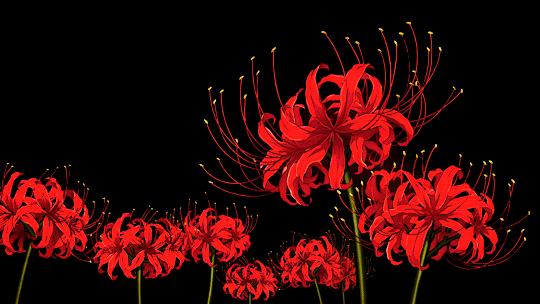
Thanks for listening to my TedTalk
#rant post#astrology ramblings#Venus#mars#jyotish#vedic astrology#astro thoughts#vedic astro notes#astro notes#astro observations#nakshatras#sidereal astrology#astro community#venusian men#martian women#lunar women#moon#rohini#purvaphalguni#purva ashadha#bharani#venusian women#venus nakshatras#astrology#astrology observations#Sunday rants#niyasruledbyvenus#sidereal observations#sagittarius#aries
514 notes
·
View notes
Text
Sidereal Indicators of being alluring, magnetic, & seductive





◦❀◦ 𝑨𝒔𝒉𝒘𝒊𝒏𝒊, 𝑴𝒂𝒈𝒉𝒂, & 𝑴𝒖𝒍𝒂 𝑺𝒖𝒏/𝑴𝒐𝒐𝒏/𝑨𝒔𝒄𝒆𝒏𝒅𝒂𝒏𝒕 𝒉𝒂𝒗𝒆 𝒂 𝒅𝒂𝒓𝒌 𝒂𝒍𝒍𝒖𝒓𝒆 𝒂𝒏𝒅 𝒂𝒕𝒕𝒓𝒂𝒄𝒕𝒊𝒗𝒆𝒏𝒆𝒔𝒔, 𝒍𝒊𝒌𝒆 𝒂 𝒃𝒍𝒂𝒄𝒌 𝒉𝒐𝒍𝒆 𝒑𝒐𝒔𝒔𝒆𝒔𝒔𝒊𝒏𝒈 𝒕𝒉𝒆 𝒂𝒃𝒊𝒍𝒊𝒕𝒚 𝒕𝒐 𝒑𝒐𝒘𝒆𝒓𝒇𝒖𝒍𝒍𝒚 𝒑𝒖𝒍𝒍 𝒂𝒏𝒚𝒕𝒉𝒊𝒏𝒈, 𝒕𝒉𝒆𝒚 𝒂𝒍𝒔𝒐 𝒑𝒐𝒔𝒔𝒆𝒔𝒔 𝒕𝒉𝒂𝒕 𝒑𝒐𝒘𝒆𝒓 𝒕𝒐𝒐. 𝑻𝒉𝒆𝒓𝒆'𝒔 𝒏𝒐 𝒆𝒔𝒄𝒂𝒑𝒊𝒏𝒈 𝒃𝒖𝒕 𝒚𝒐𝒖'𝒍𝒍 𝒅𝒆𝒆𝒑𝒍𝒚 𝒆𝒏𝒋𝒐𝒚 𝒊𝒕.
◦❀◦ 𝑹𝒐𝒉𝒊𝒏𝒊 𝑺𝒖𝒏/𝑴𝒐𝒐𝒏/𝑨𝒔𝒄𝒆𝒏𝒅𝒂𝒏𝒕 𝒃𝒆𝒂𝒖𝒕𝒊𝒆𝒔 𝒂𝒓𝒆 𝒏𝒂𝒕𝒖𝒓𝒂𝒍𝒍𝒚 𝒔𝒆𝒅𝒖𝒄𝒕𝒊𝒗𝒆 𝒂𝒏𝒅 𝒂𝒍𝒍𝒖𝒓𝒊𝒏𝒈, 𝒕𝒉𝒆𝒚 𝒉𝒂𝒗𝒆 𝒕𝒉𝒆 𝒑𝒐𝒘𝒆𝒓 𝒐𝒇 𝒂𝒕𝒕𝒓𝒂𝒄𝒕𝒊𝒐𝒏 𝒂𝒏𝒅 𝒌𝒏𝒐𝒘 𝒉𝒐𝒘 𝒕𝒐 𝒄𝒂𝒑𝒕𝒊𝒗𝒂𝒕𝒆 𝒂𝒏 𝒂𝒖𝒅𝒊𝒆𝒏𝒄𝒆 𝒘𝒊𝒕𝒉 𝒕𝒉𝒆𝒊𝒓 𝒊𝒓𝒓𝒆𝒔𝒊𝒔𝒕𝒊𝒃𝒍𝒆 𝒄𝒉𝒂𝒓𝒎𝒊𝒏𝒈𝒏𝒆𝒔𝒔. 𝑻𝒉𝒆𝒚'𝒓𝒆 𝒕𝒉𝒆 𝒆𝒑𝒊𝒕𝒐𝒎𝒆 𝒐𝒇 𝒎𝒂𝒈𝒏𝒆𝒕𝒊𝒔𝒎.
◦❀◦ 𝑨𝒔𝒉𝒍𝒆𝒔𝒉𝒂 𝑺𝒖𝒏/𝑴𝒐𝒐𝒏/𝑨𝒔𝒄𝒆𝒏𝒅𝒂𝒏𝒕 𝒘𝒐𝒎𝒆𝒏 𝒂𝒓𝒆 𝒕𝒉𝒆 𝒕𝒓𝒖𝒆 𝒔𝒆𝒅𝒖𝒄𝒕𝒓𝒆𝒔𝒔𝒆𝒔, 𝒕𝒉𝒆𝒚 𝒉𝒂𝒗𝒆 𝒆𝒏𝒕𝒊𝒄𝒊𝒏𝒈 𝒂𝒏𝒅 𝒆𝒏𝒕𝒉𝒓𝒂𝒍𝒍𝒊𝒏𝒈 𝒒𝒖𝒂𝒍𝒊𝒕𝒊𝒆𝒔 𝒂𝒃𝒐𝒖𝒕 𝒕𝒉𝒆𝒎 𝒕𝒉𝒂𝒕'𝒍𝒍 𝒉𝒂𝒗𝒆 𝒑𝒆𝒐𝒑𝒍𝒆 𝒄𝒂𝒑𝒕𝒊𝒗𝒂𝒕𝒆𝒅 𝒂𝒏𝒅 𝒉𝒚𝒑𝒏𝒐𝒕𝒊𝒛𝒆𝒅 𝒊𝒏 𝒔𝒆𝒄𝒐𝒏𝒅𝒔 𝒎𝒂𝒌𝒊𝒏𝒈 𝒊𝒕 𝒏𝒆𝒂𝒓 𝒊𝒎𝒑𝒐𝒔𝒔𝒊𝒃𝒍𝒆 𝒕𝒐 𝒓𝒆𝒔𝒊𝒔𝒕.
◦❀◦ 𝑪𝒉𝒊𝒕𝒓𝒂 𝑺𝒖𝒏/𝑴𝒐𝒐𝒏/𝑨𝒔𝒄𝒆𝒏𝒅𝒂𝒏𝒕 𝒏𝒂𝒕𝒊𝒗𝒆𝒔 𝒕𝒆𝒏𝒅 𝒕𝒐 𝒆𝒂𝒔𝒊𝒍𝒚 𝒐𝒐𝒛𝒆 𝒔𝒆𝒙 𝒂𝒑𝒑𝒆𝒂𝒍, 𝒕𝒉𝒆𝒊𝒓 𝒈𝒂𝒛𝒆𝒔 𝒂𝒓𝒆 𝒃𝒐𝒍𝒅 𝒂𝒏𝒅 𝒅𝒐𝒎𝒊𝒏𝒂𝒕𝒊𝒏𝒈, 𝒂 𝒍𝒐𝒕 𝒐𝒇 𝒕𝒉𝒆𝒎 𝒘𝒊𝒍𝒍 𝒍𝒊𝒈𝒉𝒕 𝒖𝒑 𝒂𝒏 𝒆𝒏𝒕𝒊𝒓𝒆 𝒓𝒐𝒐𝒎 𝒂𝒏𝒅 𝒐𝒖𝒕𝒔𝒉𝒊𝒏𝒆 𝒆𝒗𝒆𝒓𝒚𝒐𝒏𝒆 𝒊𝒏 𝒕𝒉𝒆 𝒓𝒐𝒐𝒎, 𝒃𝒂𝒔𝒊𝒄𝒂𝒍𝒍𝒚 𝒕𝒉𝒆𝒚'𝒓𝒆 𝒕𝒉𝒆 𝒅𝒂𝒛���𝒍𝒊𝒏𝒈 𝒕𝒊𝒈𝒆𝒓𝒆𝒔𝒔𝒆𝒔 𝒂𝒏𝒅 𝒈𝒆𝒎𝒔.





◦❀◦ 𝑷𝒖𝒓𝒗𝒂 𝑷𝒉𝒂𝒍𝒈𝒖𝒏𝒊 𝑺𝒖𝒏/𝑴𝒐𝒐𝒏/𝑨𝒔𝒄𝒆𝒏𝒅𝒂𝒏𝒕 𝒉𝒆𝒂𝒗𝒊𝒍𝒚 𝒄𝒂𝒓𝒓𝒚 𝒔𝒖𝒍𝒕𝒓𝒊𝒏𝒆𝒔𝒔 𝒊𝒏 𝒕𝒉𝒆 𝒇𝒂𝒄𝒆 𝒂𝒏𝒅 𝒃𝒐𝒅𝒚 𝒄𝒂𝒑𝒂𝒃𝒍𝒆 𝒐𝒇 𝒄𝒂𝒕𝒄𝒉𝒊𝒏𝒈 𝒐𝒏𝒍𝒐𝒐𝒌𝒆𝒓𝒔 𝒆𝒚𝒆𝒔 𝒘𝒊𝒕𝒉𝒐𝒖𝒕 𝒆𝒗𝒆𝒏 𝒕𝒓𝒚𝒊𝒏𝒈. 𝑻𝒉𝒆𝒊𝒓 𝒔𝒆𝒏𝒔𝒖𝒐𝒖𝒔 𝒂𝒏𝒅 𝒑𝒂𝒔𝒔𝒊𝒐𝒏𝒂𝒕𝒆 𝒏𝒂𝒕𝒖𝒓𝒆 𝒉𝒂𝒔 𝒆𝒗𝒆𝒓𝒚𝒃𝒐𝒅𝒚 𝒊𝒏 𝒂 𝒎𝒂𝒔𝒔𝒊𝒗𝒆 𝒄𝒉𝒐𝒌𝒆𝒉𝒐𝒍𝒅.
◦❀◦ 𝑽𝒊𝒔𝒉𝒂𝒌𝒉𝒂 𝑺𝒖𝒏/𝑴𝒐𝒐𝒏/𝑨𝒔𝒄𝒆𝒏𝒅𝒂𝒏𝒕 𝒋𝒖𝒔𝒕 𝒍𝒊𝒌𝒆 𝒕𝒉𝒆 𝒚𝒐𝒏𝒊 𝒂𝒏𝒊𝒎𝒂𝒍 𝒘𝒉𝒊𝒄𝒉 𝒊𝒔 𝒕𝒉𝒆 𝒎𝒂𝒍𝒆 𝒕𝒊𝒈𝒆𝒓 𝒕𝒆𝒏𝒅 𝒕𝒐 𝒅𝒊𝒔𝒑𝒍𝒂𝒚 𝒇𝒊𝒆𝒓𝒄𝒆𝒏𝒆𝒔𝒔 𝒕𝒉𝒂𝒕'𝒔 𝒗𝒆𝒓𝒚 𝒕𝒂𝒏𝒕𝒂𝒍𝒊𝒛𝒊𝒏𝒈, 𝒕𝒉𝒆𝒚 𝒅𝒐𝒏'𝒕 𝒉𝒂𝒗𝒆 𝒕𝒐 𝒅𝒐 𝒂𝒏𝒚𝒕𝒉𝒊𝒏𝒈 𝒕𝒐 𝒂𝒕𝒕𝒓𝒂𝒄𝒕 𝒂𝒏𝒚𝒐𝒏𝒆'𝒔 𝒂𝒕𝒕𝒆𝒏𝒕𝒊𝒐𝒏 𝒕𝒉𝒆𝒊𝒓 𝒅𝒐𝒎𝒊𝒏𝒂𝒏𝒕 𝒏𝒂𝒕𝒖𝒓𝒆 𝒂𝒏𝒅 𝒘𝒂𝒍𝒌 𝒂𝒍𝒐𝒏𝒆 𝒊𝒔 𝒗𝒆𝒓𝒚 𝒆𝒏𝒕𝒓𝒂𝒏𝒄𝒊𝒏𝒈.
◦❀◦ 𝑱𝒚𝒆𝒔𝒕𝒉𝒂 𝑺𝒖𝒏/𝑴𝒐𝒐𝒏/𝑨𝒔𝒄𝒆𝒏𝒅𝒂𝒏𝒕 𝒂𝒓𝒆 𝒃𝒍𝒆𝒔𝒔𝒆𝒅 𝒘𝒊𝒕𝒉 𝒖𝒏𝒅𝒆𝒏𝒊𝒂𝒃𝒍𝒆 𝒂𝒑𝒑𝒆𝒂𝒍, 𝒊𝒕'𝒔 𝒂𝒍𝒎𝒐𝒔𝒕 𝒍𝒊𝒌𝒆 𝒊𝒏𝒕𝒆𝒏𝒔𝒆 𝒂𝒏𝒅 𝒃𝒆𝒘𝒊𝒕𝒄𝒉𝒊𝒏𝒈, 𝒕𝒉𝒆𝒊𝒓 𝒈𝒂𝒛𝒆 𝒕𝒐𝒐 𝒊𝒔 𝒊𝒏𝒕𝒊𝒎𝒊𝒅𝒂𝒕𝒊𝒏𝒈 𝒂𝒏𝒅 𝒅𝒓𝒂𝒘𝒊𝒏𝒈 𝒑𝒐𝒘𝒆𝒓 𝒂𝒄𝒕𝒊𝒏𝒈 𝒂𝒔 𝒂 𝒎𝒂𝒈𝒏𝒆𝒕𝒊𝒄 𝒇𝒂𝒄𝒕𝒐𝒓. 𝑺𝒐𝒎𝒆 𝒎𝒐𝒅𝒆𝒍𝒔 𝒉𝒂𝒗𝒆 𝒕𝒉𝒊𝒔 𝒑𝒍𝒂𝒄𝒆𝒎𝒆𝒏𝒕 𝒊𝒏 𝑩𝒊𝒈 𝟑.
◦❀◦ 𝑷𝒖𝒓𝒗𝒂 𝑨𝒔𝒉𝒂𝒅𝒉𝒂 𝑺𝒖𝒏/𝑴𝒐𝒐𝒏/𝑨𝒔𝒄𝒆𝒏𝒅𝒂𝒏𝒕 𝒘𝒐𝒎𝒆𝒏 𝒂𝒓𝒆 𝒓𝒆𝒎𝒊𝒏𝒆𝒔𝒄𝒆𝒏𝒕 𝒐𝒇 𝑨𝒑𝒉𝒓𝒐𝒅𝒉𝒊𝒕𝒆 𝒊𝒏𝒗𝒐𝒌𝒊𝒏𝒈 𝒍𝒐𝒗𝒆 𝒂𝒏𝒅 𝒅𝒆𝒔𝒊𝒓𝒆 𝒘𝒊𝒕𝒉𝒊𝒏 𝒕𝒉𝒐𝒔𝒆 𝒕𝒉𝒆𝒚 𝒄𝒐𝒎𝒆 𝒂𝒄𝒓𝒐𝒔𝒔, 𝒊𝒕'𝒔 𝒂 𝒈𝒊𝒇𝒕 𝒕𝒉𝒂𝒕 𝒎𝒂𝒏𝒚 𝒐𝒇 𝒕𝒉𝒆𝒎 𝒑𝒐𝒔𝒔𝒆𝒔𝒔 𝒃𝒚 𝒏𝒂𝒕𝒖𝒓𝒆 𝒂𝒍𝒐𝒏𝒈 𝒘𝒊𝒕𝒉 𝒔𝒆𝒅𝒖𝒄𝒊𝒏𝒈 𝒂𝒏𝒅 𝒂𝒕𝒕𝒓𝒂𝒄𝒕𝒊𝒏𝒈 𝒘𝒂𝒏𝒅𝒆𝒓𝒊𝒏𝒈 𝒆𝒚𝒆𝒔.





◦❀◦ 𝑷𝒖𝒓𝒗𝒂 𝑩𝒉𝒂𝒅𝒓𝒂𝒑𝒅𝒂 𝑺𝒖𝒏/𝑴𝒐𝒐𝒏/𝑨𝒔𝒄𝒆𝒏𝒅𝒂𝒏𝒕 𝒊𝒔 𝒕𝒉𝒆 𝒖𝒍𝒕𝒊𝒎𝒂𝒕𝒆 𝒇𝒆𝒎𝒎𝒆 𝒇𝒂𝒕𝒂𝒍𝒆𝒔 𝒐𝒇 𝒕𝒉𝒆 𝒃𝒖𝒏𝒄𝒉 𝒌𝒏𝒐𝒘𝒊𝒏𝒈 𝒆𝒙𝒂𝒄𝒕𝒍𝒚 𝒉𝒐𝒘 𝒕𝒐 𝒑𝒍𝒆𝒂𝒔𝒆 𝒕𝒉𝒆 𝒃𝒐𝒅𝒊𝒍𝒚 𝒔𝒆𝒏𝒔𝒆𝒔 𝒕𝒉𝒆𝒊𝒓 𝒆𝒔𝒔𝒆𝒏𝒄𝒆 𝒊𝒔 𝒅𝒂𝒏𝒈𝒆𝒓𝒐𝒖𝒔 𝒂𝒏𝒅 𝒎𝒆𝒏𝒂𝒄𝒊𝒏𝒈, 𝒚𝒐𝒖 𝒉𝒂𝒗𝒆 𝒕𝒐 𝒂𝒗𝒐𝒊𝒅 𝒊𝒕 𝒃𝒖𝒕 𝒚𝒐𝒖'𝒍𝒍 𝒂𝒍𝒘𝒂𝒚𝒔 𝒇𝒊𝒏𝒅 𝒚𝒐𝒖𝒓𝒔𝒆𝒍𝒇 𝒄𝒐𝒎𝒊𝒏𝒈 𝒃𝒂𝒄𝒌 𝒇𝒐𝒓 𝒎𝒐𝒓𝒆.
◦❀◦ 𝑹𝒆𝒗𝒂𝒕𝒊 𝑺𝒖𝒏/𝑴𝒐𝒐𝒏/𝑨𝒔𝒄𝒆𝒏𝒅𝒂𝒏𝒕 𝒎𝒊𝒈𝒉𝒕 𝒕𝒓𝒊𝒄𝒌 𝒚𝒐𝒖 𝒊𝒏𝒕𝒐 𝒕𝒉𝒊𝒏𝒌𝒊𝒏𝒈 𝒕𝒉𝒂𝒕 𝒕𝒉𝒆𝒚'𝒓𝒆 𝒔𝒘𝒆𝒆𝒕 𝒂𝒏𝒅 𝒊𝒏𝒏𝒐𝒄𝒆𝒏𝒕, 𝒐𝒏𝒍𝒚 𝒊𝒇 𝒚𝒐𝒖 𝒌𝒏𝒆𝒘 𝒕𝒉𝒂𝒕 𝒅𝒆𝒆𝒑 𝒅𝒐𝒘𝒏 𝒕𝒉𝒆𝒔𝒆 𝒏𝒂𝒕𝒊𝒗𝒆𝒔 𝒂𝒓𝒆 𝒄𝒐𝒎𝒑𝒍𝒆𝒕𝒆𝒍𝒚 𝒔𝒑𝒆𝒍𝒍𝒃𝒊𝒏𝒅𝒊𝒏𝒈 𝒅𝒐𝒍𝒍𝒊𝒆𝒔, 𝒕𝒉𝒆𝒚 𝒓𝒆𝒎𝒊𝒏𝒅 𝒎𝒆 𝒆𝒏𝒕𝒊𝒓𝒆𝒍𝒚 𝒐𝒇 𝒂 𝒔𝒊𝒓𝒆𝒏 𝒂𝒃𝒍𝒆 𝒕𝒐 𝒅𝒓𝒂𝒘 𝒘𝒊𝒕𝒉 𝒕𝒉𝒆𝒊𝒓 𝒄𝒂𝒑𝒕𝒊𝒗𝒂𝒕𝒊𝒏𝒈 𝒔𝒊𝒏𝒈𝒊𝒏𝒈 𝒃𝒖𝒕 𝒑𝒓𝒆𝒔𝒆𝒏𝒄𝒆 𝒕𝒐𝒐.
◦❀◦ 𝑫𝒉𝒂𝒏𝒊𝒔𝒕𝒉𝒂 𝑺𝒖𝒏/𝑴𝒐𝒐𝒏/𝑨𝒔𝒄𝒆𝒏𝒅𝒂𝒏𝒕 𝒏𝒐𝒕 𝒐𝒏𝒍𝒚 𝒅𝒐𝒏'𝒕 𝒂 𝒕𝒐𝒏 𝒐𝒇 𝒕𝒉𝒆𝒎 𝒉𝒂𝒗𝒆 𝒔𝒕𝒂𝒓 𝒑𝒐𝒘𝒆𝒓 𝒃𝒖𝒕 𝒄𝒉𝒂𝒓𝒊𝒔𝒎𝒂 𝒂𝒔 𝒘𝒆𝒍𝒍, 𝒕𝒉𝒆𝒚'𝒓𝒆 𝒔𝒕𝒖𝒏𝒏𝒊𝒏𝒈 𝒍𝒊𝒐𝒏𝒆𝒔𝒔𝒆𝒔 𝒂𝒏𝒅 𝒍𝒆𝒂𝒅𝒆𝒓𝒔 𝒂𝒎𝒐𝒏𝒈𝒔𝒕 𝒃𝒚𝒔𝒕𝒂𝒏𝒅𝒆𝒓𝒔 𝒘𝒊𝒕𝒉 𝒔𝒐𝒎𝒆 𝒄𝒐𝒑𝒚𝒊𝒏𝒈 𝒕𝒉𝒆𝒎. 𝑻𝒉𝒆𝒊𝒓 𝒍𝒊𝒐𝒏-𝒍𝒊𝒌𝒆 𝒆𝒚𝒆𝒔 𝒎𝒂𝒊𝒏𝒕𝒂𝒊𝒏 𝒂 𝒉𝒖𝒈𝒆 𝒂𝒎𝒐𝒖𝒏𝒕 𝒐𝒇 𝒔𝒕𝒓𝒆𝒏𝒈𝒕𝒉 𝒂𝒏𝒅 𝒔𝒆𝒅𝒖𝒄𝒕𝒊𝒗𝒆𝒏𝒆𝒔𝒔.
◦❀◦ 𝑩𝒉𝒂𝒓𝒂𝒏𝒊 𝑺𝒖𝒏/𝑴𝒐𝒐𝒏/𝑨𝒔𝒄𝒆𝒏𝒅𝒂𝒏𝒕 𝒂𝒓𝒆 𝒕𝒉𝒆 𝒒𝒖𝒆𝒆𝒏𝒔 𝒐𝒇 𝒆𝒓𝒐𝒕𝒊𝒄𝒊𝒔𝒎, 𝑰 𝒄𝒂𝒏'𝒕 𝒃𝒆𝒍𝒊𝒆𝒗𝒆 𝑰 𝒇𝒐𝒓𝒈𝒐𝒕 𝒕𝒐 𝒂𝒅𝒅 𝒕𝒉𝒆𝒎 𝒐𝒏 𝒕𝒉𝒆 𝒍𝒊𝒔𝒕! 𝑻𝒉𝒆𝒔𝒆 𝒏𝒂𝒕𝒊𝒗𝒆𝒔 𝒂𝒓𝒆 𝒗𝒆𝒓𝒚 𝒉𝒐𝒕 𝒂𝒏𝒅 𝒂𝒓𝒐𝒖𝒔𝒊𝒏𝒈 𝒕𝒐𝒐 𝒎𝒂𝒏𝒚 𝒂𝒓𝒐𝒖𝒏𝒅 𝒕𝒉𝒆𝒎, 𝑰 𝒂𝒍𝒔𝒐 𝒏𝒐𝒕𝒊𝒄𝒆𝒅 𝒕𝒉𝒂𝒕 𝒕𝒉𝒆𝒚 𝒕𝒆𝒏𝒅 𝒕𝒐 𝒃𝒆 𝒔𝒆𝒙𝒖𝒂𝒍𝒊𝒛𝒆𝒅 𝒃𝒚 𝒂 𝒍𝒐𝒕 𝒐𝒇 𝒑𝒆𝒐𝒑𝒍𝒆.
◦❀◦ 𝑲𝒆𝒕𝒖 𝒊𝒏 𝟏𝒔𝒕 𝑯𝒐𝒖𝒔𝒆 𝒈𝒓𝒂𝒏𝒕𝒔 𝒏𝒂𝒕𝒊𝒗𝒆𝒔 𝒘𝒊𝒕𝒉 𝒈𝒐𝒕𝒉𝒊𝒄 𝒂𝒏𝒅 𝒄𝒐𝒎𝒑𝒆𝒍𝒍𝒊𝒏𝒈 𝒆𝒏𝒆𝒓𝒈𝒊𝒆𝒔, 𝒕𝒉𝒆𝒊𝒓 𝒃𝒆𝒂𝒖𝒕𝒚 𝒂𝒏𝒅 𝒐𝒗𝒆𝒓𝒂𝒍𝒍 𝒂𝒖𝒓𝒂 𝒊𝒔 𝒂𝒃𝒔𝒐𝒍𝒖𝒕𝒆𝒍𝒚 𝒕𝒓𝒂𝒏𝒄𝒆-𝒊𝒏𝒅𝒖𝒄𝒊𝒏𝒈 𝒂𝒏𝒅 𝒊𝒏𝒕𝒐𝒙𝒊𝒄𝒂𝒕𝒊𝒄𝒂𝒕𝒊𝒏𝒈. 𝑻𝒉𝒆𝒊𝒓 𝒎𝒚𝒔𝒕𝒊𝒇𝒚𝒊𝒏𝒈 𝒂𝒏𝒅 𝒆𝒏𝒊𝒈𝒎𝒂𝒕𝒊𝒄 𝒑𝒆𝒓𝒔𝒐𝒏𝒂𝒍𝒊𝒕𝒊𝒆𝒔 𝒘𝒊𝒍𝒍 𝒍𝒆𝒂𝒗𝒆 𝒂𝒏𝒚𝒐𝒏𝒆 𝒊𝒏𝒕𝒓𝒊𝒈𝒖𝒆𝒅.





◦❀◦ 𝑷𝒍𝒖𝒕𝒐 𝒊𝒏 𝟏𝒔𝒕 𝑯𝒐𝒖𝒔𝒆 𝒑𝒆𝒐𝒑𝒍𝒆 𝒂𝒓𝒆 𝒎𝒚𝒔𝒕𝒆𝒓𝒊𝒐𝒖𝒔, 𝒂𝒏𝒅 𝒎𝒂𝒈𝒏𝒆𝒕𝒊𝒄 𝒕𝒉𝒆𝒚 𝒌𝒏𝒐𝒘 𝒉𝒐𝒘 𝒕𝒐 𝒑𝒆𝒓𝒇𝒐𝒓𝒎 𝒂 𝒔𝒉𝒐𝒘 𝒊𝒏 𝒇𝒓𝒐𝒏𝒕 𝒐𝒇 𝒅𝒐𝒛𝒆𝒏𝒔 𝒘𝒊𝒕𝒉 𝒃𝒆𝒈𝒖𝒊𝒍𝒊𝒏𝒈 𝒂𝒏𝒅 𝒓𝒊𝒗𝒆𝒕𝒊𝒏𝒈 𝒎𝒂𝒏𝒏𝒆𝒓𝒊𝒔𝒎𝒔. 𝑰𝒕'𝒍𝒍 𝒃𝒆 𝒔𝒐𝒎𝒆𝒕𝒉𝒊𝒏𝒈 𝒕𝒉𝒂𝒕 𝒚𝒐𝒖'𝒍𝒍 𝒏𝒆𝒗𝒆𝒓 𝒆𝒗𝒆𝒓 𝒘𝒂𝒏𝒕 𝒕𝒐 𝒇𝒐𝒓𝒈𝒆𝒕.
◦❀◦ 𝑻𝒂𝒖𝒓𝒖𝒔 𝑨𝒓𝒖𝒅𝒉𝒂 𝑳𝒂𝒈𝒏𝒂 𝒄𝒂𝒏 𝒎𝒂𝒌𝒆 𝒐𝒕𝒉𝒆𝒓𝒔 𝒑𝒆𝒓𝒄𝒆𝒊𝒗𝒆 𝒕𝒉𝒆𝒎 𝒂𝒔 𝒔𝒆𝒏𝒔𝒖𝒂𝒍, 𝒅𝒆𝒔𝒊𝒓𝒂𝒃𝒍𝒆, 𝒂𝒏𝒅 𝒑𝒓𝒆𝒑𝒐𝒔𝒔𝒆𝒔𝒔𝒊𝒏𝒈.
◦❀◦ 𝑳𝒆𝒐 𝑨𝒓𝒖𝒅𝒉𝒂 𝑳𝒂𝒈𝒏𝒂 𝒂𝒓𝒆 𝒕𝒚𝒑𝒊𝒄𝒂𝒍𝒍𝒚 𝒑𝒆𝒓𝒄𝒆𝒊𝒗𝒆𝒅 𝒂𝒔 𝒄𝒉𝒂𝒓𝒊𝒔𝒎𝒂𝒕𝒊𝒄, 𝒆𝒙𝒒𝒖𝒊𝒔𝒊𝒕𝒆, 𝒂𝒏𝒅 𝒓𝒂𝒅𝒊𝒂𝒏𝒕.
◦❀◦ 𝑺𝒄𝒐𝒓𝒑𝒊𝒐 𝑨𝒓𝒖𝒅𝒉𝒂 𝑳𝒂𝒈𝒏𝒂 𝒊𝒏 𝒆𝒚𝒆𝒔 𝒐𝒇 𝒑𝒆𝒐𝒑𝒍𝒆 𝒂𝒓𝒆 𝒑𝒆𝒓𝒄𝒆𝒊𝒗𝒆𝒅 𝒕𝒐 𝒃𝒆 𝒅𝒂𝒓𝒌, 𝒎𝒂𝒈𝒏𝒆𝒕𝒊𝒛𝒊𝒏𝒈, 𝒂𝒏𝒅 𝒉𝒚𝒑𝒏𝒐𝒕𝒊𝒄.





#vedic astrology#vedic astro notes#nakshatras#vedic beauty#vedic astro observations#mula#magha#ashwini#rohini#ashlesha#chitra#purva phalguni#vishakha#jyestha#purva ashadha#purva bhadrapada#revati#dhanistha#ketu in 1st house#pluto in 1st house#taurus arudha lagna#leo arudha lagna#scorpio arudha lagna#bharani
1K notes
·
View notes
Text
Whitney Houston

♋ Ashlesha Sun
♓ Revati Moon in conjunction with Jupiter in the 2H (this house rules our voice, self-explanatory 🤭👄🎤)
♒ Shatabhisha ASC
♑ Dhanishta Saturn in the 12H (lagnesha and atmakaraka)
♊ Punarvasu Rahu in the 5H | ♐ Purva Ashadha Ketu in the 11H
#astrology observations#vedic astrology#astrology community#atmakaraka#whitney houston#ashlesha nakshatra#cancer#pisces#revati nakshatra#Shatabhisha#Aquarius#punarvasu nakshatra#rahu in the 5th house#ketu in the 11th house#purva ashadha nakshatra#sagittarius#gemini#jupiter in the 2th house#moon in the 2th house#dhanishta nakshatra#capricorn#dhanishta atmakaraka#saturn in the 12th house#12th house#12H placements#revati moon#ashlesha sun#Shatabhisha asc#vedic notes#2th house
82 notes
·
View notes
Text
Purva Ashadha is renowned as "the star of invincible waters." This Nakshatra symbolizes the flowing waters of immense strength and power. These waters can slice through and obliterate anything in their path, yet they also radiate a soft and cooling essence that renders them both pleasant and bearable.
More posts on Purva Ashadha Nakshatra
Nakshatra Notes Masterpost (Link collection of all 27 Nakshatras)
#astrology#vedic astrology#Purva Ashadha#Nakshatra#Sagittarius#Purva Ashadha Nakshatra#PurvaAshadha#nakshatras observations#astrology observations#vedic notes#astrology blog#vedic astro notes#vedic astro observations#astro notes#vedic astrology observations#nakshatras#astro posts#astro placements#astro observations#astrology tumblr#PositivePurvaAshadhaCOC
35 notes
·
View notes
Text
vedic astrology observations pt. 1
➸ prominent purvabhadrapada placements can have a tendency to push people's boundaries/past their comfort zone, but the native doesn't see it that way and (if they do, they don't see any harm in it)
➸ purvabhadrapada placements can also be framed as a "bad influence," but again, the native doesn't see it that way. from their perspective, it's useless to put the blame on them when you always have the power to push back and say "no."
➸ i know people with prominent uttarabhadrapada placements that face a lot of unnecessary bs from other people. they can face humiliation, bullying, etc. but i've noticed that they rarely let that change who they are. they're sweethearts imo <3
➸ having prominent moon energy/dominance teaches others to have patience. some people don't like that moon dominant women are naturally dependent on others, and the native doesn't see the issue with it. they are naturally in tune with their feminine energy.
➸ uttarashadha natives have a natural charisma to them and can attract a lot of friends. on the flip side, once they find themselves disinterested in a friend, they leave in an instant without further notice. sometimes, they come back out of nowhere. this manifests as flakiness or nonchalance.
➸ that being said, when uttarashadha natives find a significant other, they are incredibly devoted, even if they may not always show it through an emotional means
➸ some jupiterians have a tendency to give unsolicited advice and can behave quite arrogant at times
➸ ashlesha natives and uttarashadha natives can have a tendency to clash. ashlesha's are ruled by the nagas aka serpentine beings, and uttarashada is ruled by the mongoose yoni. the snake and mongoose are enemies in nature. that being said, the two natives tend to be fascinated with each other .
➸ ashlesha's are very misunderstood. people tend to dislike them for their seemingly defensive and scheming nature (like a snake), however the natives only behave that way if they are given a reason to. otherwise in my experience they're sweet and quite protective of loved ones.
i have a cool irl example: take leah kateb and robert rausch from love island. leah is an ashlesha sun, and rob's job is a snake wrangler. leah even mentioned how she believed snakes were misunderstood. just like the snakes, leah was deeply misunderstood and mistreated by rob. idk i just think the irl symbolism is so fascinating. (interestingly enough, rob's venus & mercury are likely in ashlesha)
➸ i've noticed that a lot of women with jupiter in swati (between 12-18 degrees) tend to attract foreign spouses or a spouse who had a much different upbringing than theirs (e.g. different social class). jupiter in purvabhadrapada or shatabhisha are honorable mentions.
#vedic astrology#vedic astro observations#vedic astro notes#nakshatra#ashlesha#uttara bhadrapada#purva bhadrapada#uttara ashadha#nakshatras#swati#ashlesha nakshatra#uttara bhadrapada nakshatra
275 notes
·
View notes
Note
Thoughts on ketu in purvashadha. I read your post on ketu's association with creativity but also any other observations. It's in 6h saggitarius with sun and mercury in mula. Thanks ❤
Hii
Again, rambled a lot 😭 but it's worth it.
Basically, you can read my post about ketu, I also talk about my ketu in jyeshta there but you just apply that to purva ashadha and its themes.
A good way to understand purva ashadha (and any other nakshatra) is to compare it to other nakshtaras ruled by the same planet, in this case, venus.
Bharani is venus channeled through mars(active mars, aries/1st house), which means that it takes the energies of venus and protects/defends(mars themes) them. This is mostly the origin of developing/cultivating beauty and abundance and the neccessity of gatekeeping in order to achieve that. It's also focused on self, because it's in aries, so, bharani is the nakshatra connected to physicality and the rules of the material world(in every sense), and how the female body itself is what birthes and manifests life into the material, and how its THE thing to be worshipped. I have a long post about bharani and yet I still have so much more I want to say about it 😭 but you get the gist.
Purva Phalguni is venus channeled through sun(leo/5th house) but it's more laid back, relaxed and more actively focused on enjoyment. Bharani is more passive and more focused on self-preservation than Purva Phalguni. Purva Phalguni finds pleasure in giving(Bharani is the yoni, P. Phalguni is the phallus). It's venus integrated into the identity/ego/self(sun). Bharani's self-focus is more about the literal body and basic self-awarness, P. Phalguni is about love, pleasure and art as enjoyment. Both Bharani and P. Phalguni are very sexual in nature, in different ways, but in my experience, even if natives of those two don't have much in common they still get along well, or at the very least genuinely appreciate and respect each other. Their yoni animals are said to have a special relationship(elephant and rat).
Now to Purva Ashadha, which is not as sexual(not usually and not overtly at least) as other venus nakshatras. It's venus channeled through jupiter, so, venus here is focused on expansion and philosophies. This is venus energies being idolized, moralized and "promoted", so to speak. It's literally what it sounds like. Purva Ashadha is about gaining alliances to secure your victory, about determination. I think out of all venus nakshatras purva ashadhas have the most potential to be snobbish, just because it has a tendency to moralize beauty and art. There obviously is a lot of truth in one thing being superior to another, but unevolved purva ashadhas are the ones that fail to realize that some things they claim to be objectively good might just be enjoyed by them, but they don't back down easily. I just realized how propagandist this nakshatra can be omg. Anyways, aside from that, evolved ones know when to be not bother with trying to prove their superiority and realize that the oens who are meant to share their ideals and be their true allies will naturally reveal themselves.
The thing about ketu is that you yourself know it best. It's verrrryyyy personal. It's literally yoir past lives stored together, your most primal and familiar part, so, if you're asking someone else what its about you're kinda doing it wrong, cause no one else can tell you about that part of yourself(any part of yourself, actually, but this part esp. so). I think you already have an innate understanding of your ketu, I think everyone does. It's what you've known since very early childhood, it's what you think your past life was like, it's those themes and energies you know too well. Ketu is stillness, the hidden, the transcendental. It's your foundation, it's the conqueror, it's where YOU set the rules, because you have a clean slate. It's about liberation.
Btw, if you see a lot of posts nudging you towards rahu cause it's the future and your destiny, do the opposite cause rahu is already a very high-alert, hyper-aware, anxious place in a chart and since rahu is always connected to ketu, ketu is what gives you the power to achieve your destiny. Rahu will make you aimlessly chase different things, thinking it's doing a good job, but ketu has the real power, in a sense that it has a real knowing understanding of what its doing, without being aware that it is. Rahu thinks it knows and it does not, Ketu does not even know there's anything to know and it just naturally moves. So, I'd advise to not fall into the trap of looking oitside of yourself, thinking there's something to do. Find the stillness within yourself and you'll discover things you probably did not even know were there. Be natural, be detached, be yourself and I think you'll connect to your ketu.
I'd love to know if this has resonated with you.
#vedic astrology#astrology#nakshatras#astrology observations#sidereal astrology#astro notes#astrology tumblr#ask#purva ashadha#purva ashadha nakshatra#ketu#ketu in purva ashadha#venus#bharani#purva phalguni#venus nakshatras
44 notes
·
View notes